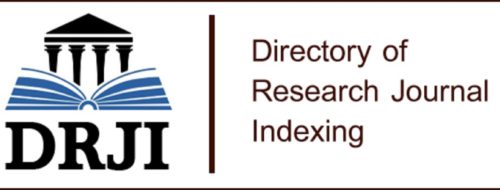Quality index method (QIM): development of a sensory ice storage scheme for the Peruvian Carita Selene, (Guichenot, 1866).
Investigation article
Keywords:
Selene peruvina, senrial analysis, shelf lifeAbstract
The (QIM) is the method that has been used in recent years to establish the freshness of fish species, one of the procedures that are often being used is sensory assessment, both in daily inspections either in ports or in markets. , and himself by consumers. The Quality Index Method (QIM) in its objective is to perform an assessment of characteristic attributes (skin, eyes, gills, etc.) in the species to be evaluated. These attributes are given their respective assessment which has a rating of (0 to 3) points. This score is added to give a result, which is called the Quality Index (QI), which establishes a linear correlation which determines the remaining useful life of a lot. This method has a short-term implementation, since in the future it will be the reference in the field in the European Union. In this project, the objective is to develop a QIM scheme for the Carita Selene Peruviana, stored on ice inside an isothermal container (polystyrene), to evaluate its freshness correlating it with microbiological parameters (total coliforms). The specimens were obtained on the beach in the city of Manta. This project was carried out for 15 days in a row, using 30 specimens, of which 15 specimens took 1 daily, to the CESSECA laboratory located at the Universidad Laica Eloy Alfaro de Manabí in the City of Manta, to carry out the respective assessment of the microbiological analyzes. And the remaining 15 specimens 1 specimen was sensory evaluated daily. The main sensory changes were the change in general appearance. The specimens of the first days which were fresher presented: bright pigmentation and intact skin, convex eyes with transparent cornea and shiny black circular pupil, and dark red gills with normal odor. As the days went by, the faces presented loss of iridescence and lacerations on the skin, reddish eyes, the color of the gills changed to brown-yellowish and a putrid smell. All the scores assigned to the external attributes showed high correlation with the time it was stored, and the QI increased linearly with an R2 = 0.91 (QI = 0.73x + 4.50: where x = days on ice), which which we realize can be used to assess the freshness of the specimens. Through days of unacceptable specimens with QI values greater than 18, reaching this score after 7 days of storage. N-BVT content and bacterial counts also reached the 7th day storage limits. The maximum tolerable limits by the regulations (30-35 mg N-BVT / 100g, CAA and CEE / 149/1995 and 10 - 10 / -UFC / g, ICMSF 1983). These results indicate that the QIM scheme developed would be appropriate for the freshness of the smiley in its useful life
Keywords: Selene peruvina, senrial analysis, shelf life.
Downloads
References
Botta, J. R. Evaluation of Seafood Freshness Quality. VSH Publishers,. United States of America,: pág.180., 1995.
Eschmeyer, W. N. (1998). Catalog of Fishes, Special Publication of the Center fot Biodiversity Research and Information, núm. 1, vol. 1-3. California Academy of Sciences. San Francisco, California, Estados Unidos: 2905. ISBN 0-940228-47-5.
HA, Bremner. Fish Processing Bulletin . 7:59, 1985.
HA., Bremner. Fish Processing Bulletin. 7: 59, 1985.
Haard NF. (1992) Huss HH. Journal Aquatic Food Product Technology, Quality Changes in Fresh Fish, FAO. s.f.
HH., Huss. Quality Changes in Fresh Fish. United Nations, Rome: FAO Fisheries Tech Paper, 348, 1995.
Huidobro, A., A. Pastor, y M. Tejada. “Quality Index Method developed for raw gilthead seabream (Sparus aurata)”. Journal of Food Science 65 (7).: pág.1202-1205, 2001.
NF, Haard. Journal Aquatic. Food Product Technology: 1,9, 1992.
NF., Haard. Journal Aquatic Food Product Technology. 1,9., 1992.
Odum, Eugene P. . Ecología. Mèxico: Nueva editorial Interamericana S.A de C.V, 1963.
Susan, & luna. Fish base. . Obtenido de Fish base: https://www.fishbase.de/summary/Selene-peruviana.html, 2018.
V., Blaskovic ´, D. Castillo, C. Fernandez, y I 2008. Navarro. Hábitos alimentarios de las principales especies costeras del litoral de Tumbes en el 2007. Informe Técnico Anual. Instituto del Mar del Perú. Inf. Interno. Marzo 2008. Dirección de Investigaci. 2008.
V., Blaskovic´, D. Castillo, C. Fernandez, y I. 2008. Navarro. Hábitos alimentarios de las principales especies costeras del litoral de Tumbes. Dirección de Investigaciones en Peces Demersales y Litorales. : Unidad de Investigaciones en Biodiversidad. Área de Ecología Trófica. 13 p, 2007.
Published
How to Cite
Issue
Section
License
Copyright (c) 2019 Revista de Ciencias del Mar y Acuicultura YAKU. ISSN: 2600-5824.

This work is licensed under a Creative Commons Attribution-NonCommercial-ShareAlike 4.0 International License.


1.jpg)













